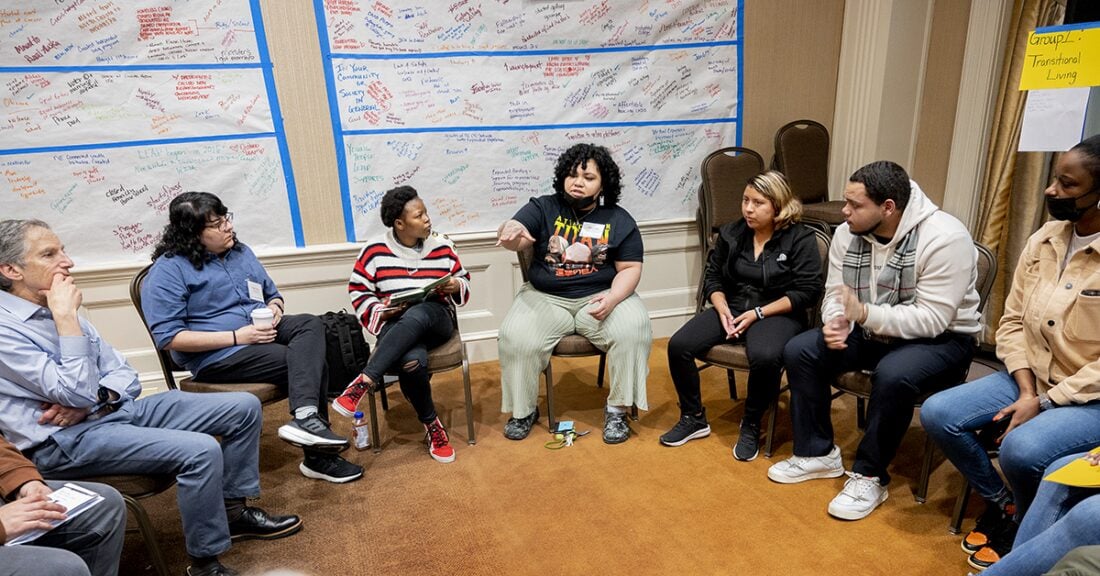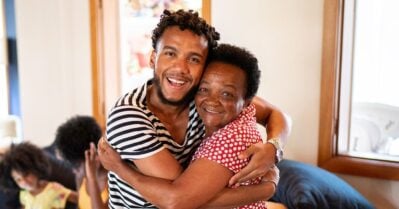Lessons from the Learn and Earn to Achieve Potential (LEAP) Initiative
 Ranita Jain
Ranita Jain

On average, young people who experience child welfare, the justice system and homelessness have higher rates of disconnection from school or work than their peers. These young adults may have their education interrupted or struggle to get the credentials needed to earn a living wage and secure a steady job. Through the Learn and Earn to Achieve Potential (LEAP)™ initiative, the Annie E. Casey Foundation and our partner organizations have collaborated on innovative practices that support education and career success for these young people.
Although LEAP officially concluded in 2024, I hope the practices developed through the initiative can continue to inform the work of youth-serving organizations and support young people for many years to come.
Helping Young People Access Opportunities and Thrive
Young people need support on the path to adulthood. These critical years can have outsized effects on young adults’ future earnings, economic mobility and overall well-being. The need for strategies that support all young people — especially those with systems involvement — led to the creation of LEAP.
Launched in 2016 by the Corporation for National and Community Service and the Casey Foundation, LEAP’s partners in eight states helped systems-involved young people ages 14 to 25 succeed in school and at work.
LEAP partnerships used two established models to work with youth:
- JFF’s Back on Track: connects young people to postsecondary education and supports them through the first year of college.
- Jobs for America’s Graduates (JAG): helps young people earn a high school credential and get their first jobs.
The results were impressive. According to a 2019 MDRC evaluation of LEAP:
- Seventy-six percent of participants in LEAP’s Back on Track model and over half of all LEAP participants went on to enroll in postsecondary or advanced training/certification.
- Thirty-nine percent of all youth connected to LEAP found jobs and, of those, 68% maintained employment for at least six months.
- The postsecondary attainment rate for LEAP participants was on par with national averages for young adults overall.
In its eight years of implementation, LEAP demonstrated the value of strengthening career and education pathways and the positive outcomes they yield for young people. It also helped many LEAP partners grow their networks, improve youth leadership practices and change systems to better meet the needs of young people.
Four Lessons from LEAP
As I reflect on the innovative practices developed with and implemented by our LEAP grantees, I want to highlight four key lessons:
- Young people thrive when systems work for them. LEAP grantees invested in partnerships that enabled them to build networks of “holistic” support for young people that extended beyond paths to a career or education. These partnerships helped connect systems-involved youth with resources like housing, transportation and child care.
- Pathways need to follow the lives of young people. LEAP partners recognized that young people’s experiences entering the workforce or pursuing education were often unique and influenced by other priorities such as parenting responsibilities, earning additional income or taking care of their mental health. In response, partnerships focused on developing flexible learning experiences tailored to each young person’s needs. They also created strategies like the LEAP “pause button,” which allowed young people to exit and re-enter the program as needed while still receiving support and resources.
- Investing in youth leadership matters. LEAP partnerships like the national youth fellowship program encouraged young people to take on new challenges and grow. We learned that engaging youth in LEAP implementation improves programming and supports the personal development of young people. A core priority of LEAP was to strengthen young people’s capacity as leaders and create opportunities for them to design and lead change in their communities.
- When it comes to scale, think outside the box. As LEAP partnerships sought to expand access to supportive pathways to careers and education, they learned to think creatively about scale — and that achieving scale means more than just increasing enrollment numbers. Thoughtfully scaling LEAP pathways required expanding into new locations, training staff as well as growing state or local partnerships.
The LEAP initiative offers a powerful reminder that when systems align around the needs, goals and realities of young people, real progress is possible. As youth-serving organizations continue the critical work of expanding access to education and employment, lessons from LEAP can serve as a guide, demonstrating that with the right support, flexibility and trust in youth leadership, all young people can access opportunity and achieve their full potential.
Ranita Jain is a senior associate with the Casey Foundation’s Center for Economic Opportunity.
Access the complete archive of LEAP resources and publications





